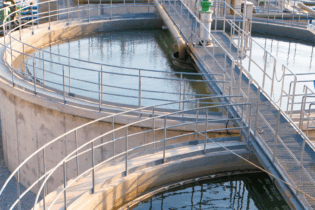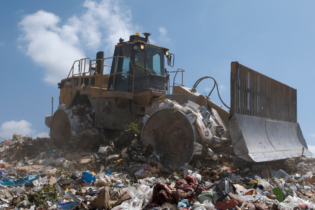Coordinators, sponsors and volunteers who participated in this year’s International Coastal Clean-Up Day that took place on 18 September, described this year’s event as the best ever since South Africa officially became part of the biggest volunteer effort for ocean health in 1996. This annual event was initiated by the Ocean Conservancy in 1986 and has grown with more than 100 countries participating in cleaning up their coastal areas.
Good weather for it According to John Kieser, coordinator of the event and sustainability manager at Plastics|SA in the three Cape Provinces, good weather on the day resulted in more volunteers participating than was originally expected, allowing them to cover more distances along the coastlines and collecting more litter than in previous years. “In the 19 years of coordinating the International Coastal Clean-up in the three Cape Provinces, I have never experienced a clean-up like this year. We had an incredible turnout of people that wanted to make a difference to South Africa’s coastline. Their dedication to picking up mainly small items was overwhelming and we collected more micro waste than larger pieces of litter on the beaches. The comradery and positivity will always stay with me,” Kieser commented. 10 elephants’ worth of trash Approximately 47 tons of litter (weighing the same as 10 large African elephants) were removed along 380 kilometres of coastline, of which 17 kilometres were rivers and waterways, and five square kilometres were in underwater areas. Whilst KwaZulu-Natal was less fortunate with the poor weather that affected the number of volunteers who participated, the Cape provinces alone attracted more than 15 000 people from all ages who flocked to the 421 beaches. The main sponsors included the Plastics|SA Sustainability Council (PETCO, POLYCO. SAVA, PSPC), Pick n Pay, Tuffy, Garbie, National Recycling Forum, Glass Recycling Company, ROSE Foundation, Collect-a-Can, Paper Recycling Association of SA, Tetrapak, KZN Wildlife and Kelpak, which ensured that each volunteer received a collection bag, gloves and data sheets to record the most prevalent pollutants that were picked up on the day.Eastern Cape success
According to Kieser, this year saw a dramatic increase in the number of clean-ups held in the Eastern Cape, attracting volunteers that could equal those who attended the Western Cape clean-ups. “It is wonderful to see that participation is growing across all racial and age groups each year and that the event is becoming truly representative of our country’s demographics,” Kieser said. As a result of the large turnout of volunteers, organisers had their hands full ensuring that enough resource material was available and that the waste collected was quickly and effectively removed and transported to the closest recycling facilities. “The need to separate material earmarked for recycling has been increasing each year. To this end, we were requested to supply many clean-up sites with two different coloured bags, one for recyclables and one for ordinary waste disposal. The challenge now lies in getting all the data collated to give us a picture of what is lying on our beaches,” Kieser explains. Government support Brand SA and Department of Environmental Affairs also endorsed the day, with deputy minister of Environmental Affairs Barbara Thomson attending a beach clean-up in East London and encouraging the plastics, metals and glass industries to continue with their voluntary efforts to increase recycling. “We need to encourage all South Africans to become concerned about recycling and make the effort to buy material produced from recycled material,” said deputy minister Thomson. “The significance of the International Coastal Clean-up campaign is that it not only promotes awareness of the litter problem, but also draws our attention to the need for better waste management on land. The International Coastal Clean-up Day once again reminds us of the importance of our beautiful and valuable coastal and marine environment, and the need to take care of it,” she said.







